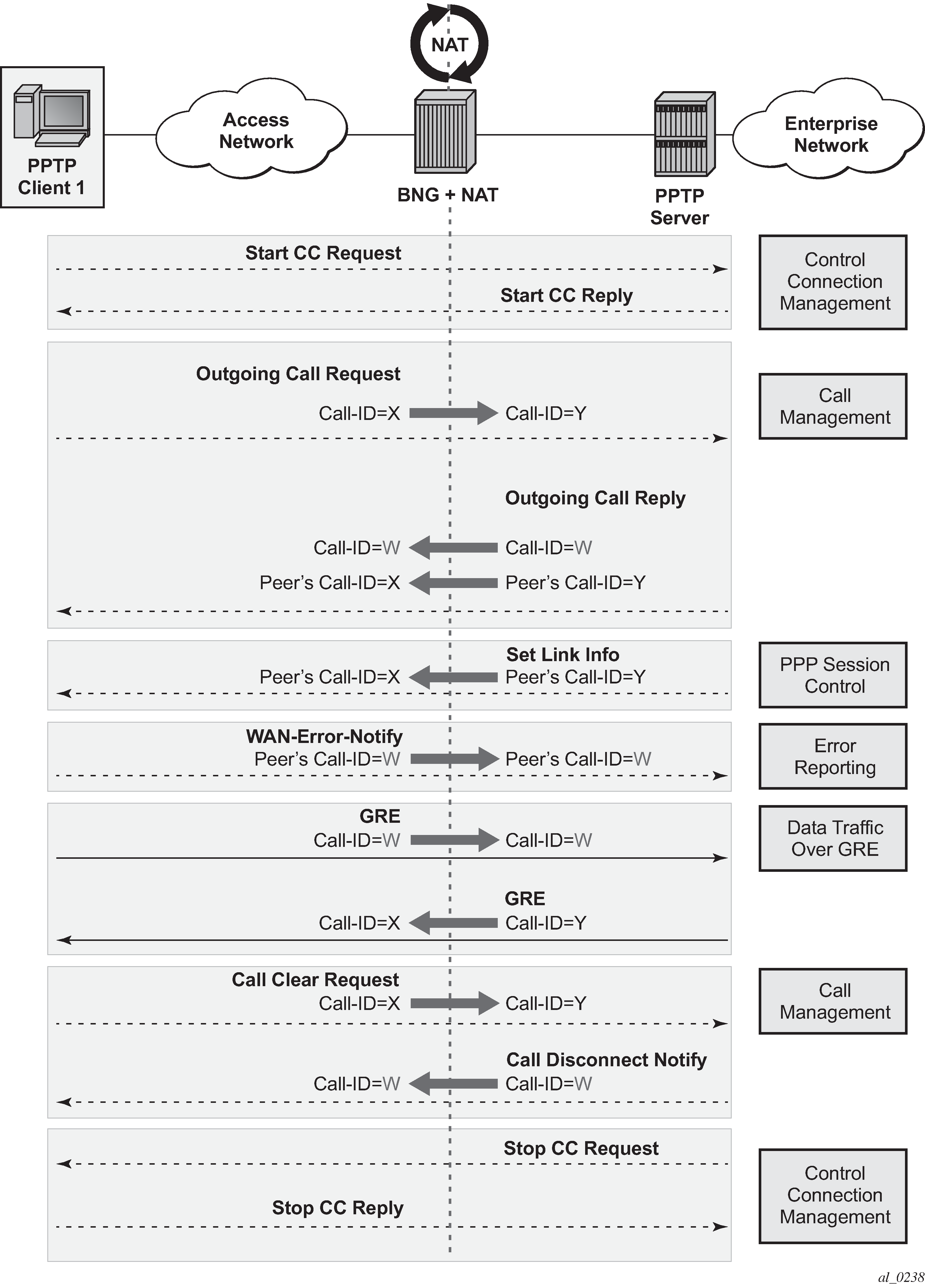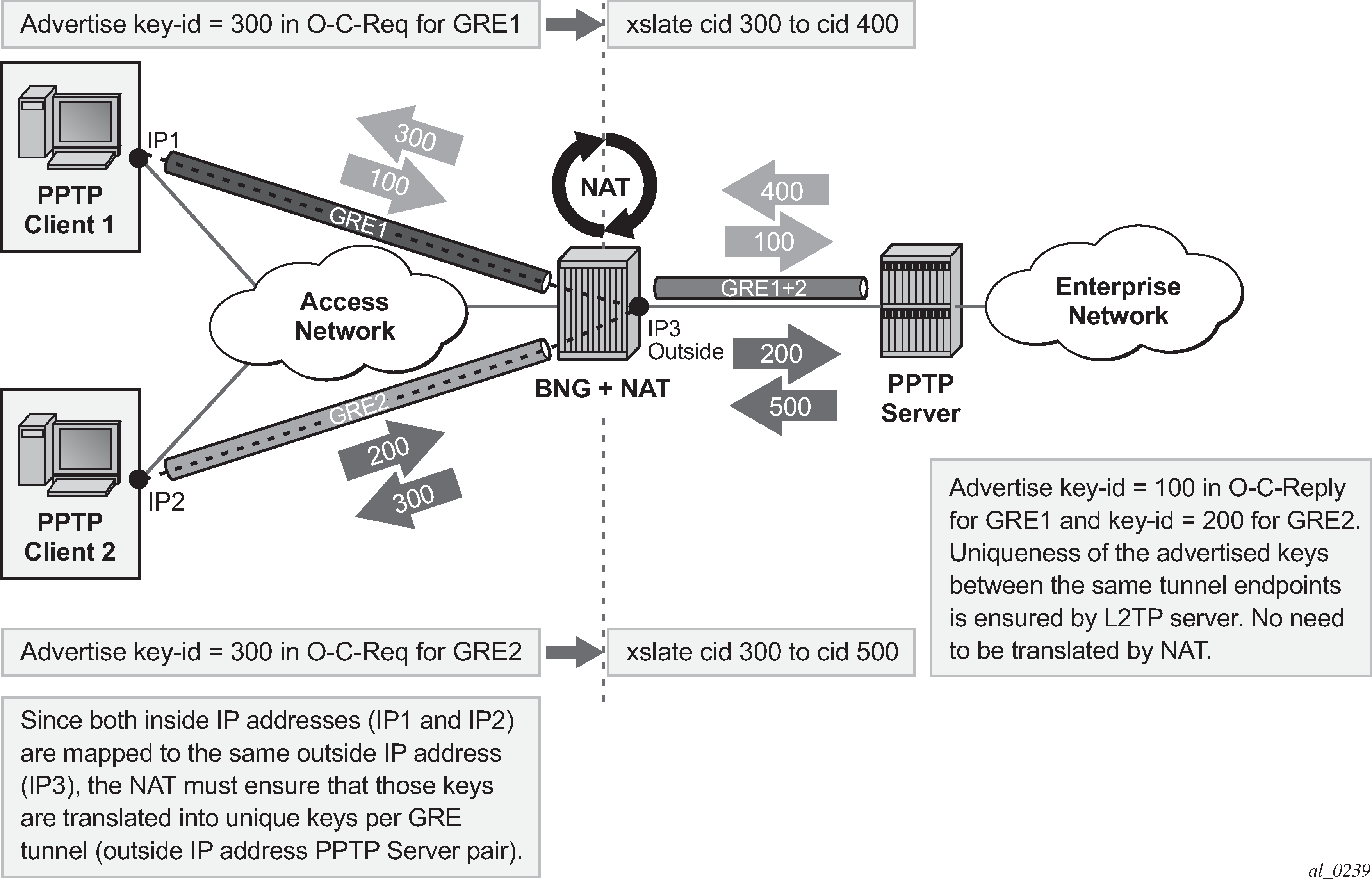PPTP ALG is aware of the control session (Start Control Connection Request/Replay) and consequently it captures the Call ID field in all PPTP messages that carry that field. In addition to translating inside IP and TCP port, the PPTP ALG process data beyond the TCP header to extract the Call ID field and translate it inside of the Outgoing Call Request messages initiated from the inside of the NAT.
The GRE packets with corresponding Call IDs are translated through the NAT as follows:
The inside source IP address is replaced by the outside IP address and the opposite is true for traffic in the opposite direction. This is standard IP address translation technique. The key is to keep the outside IP address of the control packets and corresponding data packets (GRE tunnel) the same.
The Call-ID in the GRE packets in the direction of outside to inside is translated by the NAT according to the mappings that were created during session negotiation.
In addition, the following applies:
GRE packets are translated and passed through the NAT only if they can be matched to an existing PPTP call for which the mapping already exists.
Translation of the Call-IDs advertised by the PPTP server in the Outgoing Call Reply control message (this message is sent from the outside of the NAT to the inside) are not translated. Subsequently the Call ID in such messages are transparently passed through the NAT. There is no need to translate those Call IDs as their uniqueness between the two endpoints are guaranteed by the selection algorithm of the PPTP server. This can be thought of as destination TCP/UDP ports. They are not translated in the NAT. Instead only the source ports are translated.
PPTP session initiation in the outside to inside direction through the NAT is not supported.
Call-ID’s are allocated and used in the same fashion as the outside TCP/UDP ports (random with parity). They are taken from the same port range as ICMP ports.
The basic principle of PPTP NAT ALG is shown in Figure: NAT PPTP operation.

The scenario where multiple clients behind the NAT are terminated to the same PPTP server is shown in Figure: Merging of endpoints in NAT. In this case, it is possible that the source IP addresses of the two PPTP clients are mapped to the same outside address of the NAT. Because the endpoints of the GRE tunnel from the NAT to the PPTP server are the same for both PPTP clients (although their real source IP addresses are different), the NAT must ensure the uniqueness of the Call-IDs in the outbound data connection. This is where Call-ID translation in the NAT becomes crucial.
